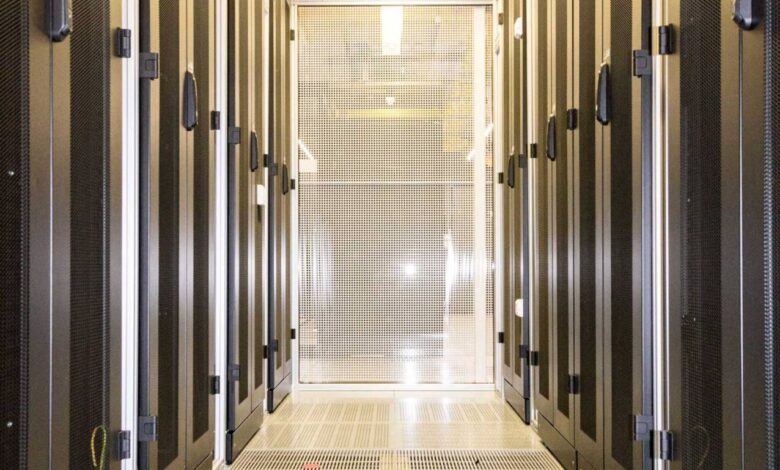
In what seems like a matter of months, generative AI has evolved from being a fringe technology to a cornerstone of business operations. According to McKinsey’s State of AI report, 65% of organisations were using generative AI in 2024 – almost double the previous year.
While some enterprises are developing their own AI models, much of this surge is driven by the growing availability of off-the-shelf SaaS applications with AI. From content generation and language processing, to data analytics and customer service, these applications promise to enhance productivity and decision-making.
Yet, their true potential is often hamstrung by a critical factor: connectivity. When it comes to generative AI, speed isn’t just a convenience – it’s a functional and competitive necessity. When SaaS applications suffer from lag, latency, and congestion, workflows grind to a halt, negating the very efficiencies AI is meant to deliver.
This isn’t a new issue. A survey in 2022 found that waiting times due to lag or poor connectivity totalled an average of 46 minutes per week, or 35 hours per year. As businesses integrate more SaaS applications into their operations, this ostensibly trivial issue is likely to become a major productivity killer.
The Public Bottleneck: Why is Traditional Connectivity Failing?
If businesses want to take full advantage of modern SaaS capabilities – whether they are AI-driven or not – a connectivity rethink is due. Despite the rapid adoption of SaaS applications, many enterprises still rely on the public Internet to access them.
The public Internet was never designed to handle the demands of modern, latency-sensitive workloads.
Network congestion, unpredictable routing, and traffic bottlenecks introduce delays that disrupt real-time processing, collaborative workflows, and AI-driven automation.
These inefficiencies are particularly unfavourable in AI-driven SaaS environments, where applications require continuous, high-speed data exchanges to function optimally. Whether it’s an AI analytics tool or an enterprise chatbot, performance degradation erodes the promised efficiency gains.
This issue is further compounded by the unpredictability of Internet routing. Data travelling across the public Internet is subject to multiple handoffs between different service providers, each introducing potential delays and security vulnerabilities.
Unlike traditional enterprise applications, which may tolerate minor slowdowns, modern SaaS solutions often require near-instantaneous responses. High latency can lead to delayed output, sluggish performance, and inconsistent user experiences.
Choosing the Path of Least Resistance
Businesses investing in SaaS – particularly those that depend on time-sensitive AI inference – cannot afford to have their workflows throttled by suboptimal connectivity. Since the inception of the Internet, connectivity has largely been taken for granted.
High-speed, high-bandwidth connections have always been superior, but little more thought went into it. The volume of modern SaaS applications and the demands they place on networks has changed that. Direct interconnection with cloud providers offers a more suited approach.
This approach ensures predictable latency, higher stability, and faster data transmission. Instead of routing SaaS traffic through congested, unpredictable Internet pathways, direct peering services enable businesses to exchange data via the shortest physical network routes to cloud service providers.
This reduces jitter, eliminates unnecessary hops, and provides enterprises with performance guarantees. This is exactly what is needed for latency-sensitive AI applications.
Direct connectivity allows organisations to interact with cloud-based SaaS platforms as if they were hosted within their own private networks. So, whether it’s a finance firm running real-time risk assessments or an enterprise using AI collaboration tools, directly connectivity makes a critical difference.
For enterprises serious about SaaS productivity, a well-structured connectivity strategy is no longer optional. Implementing redundant, multi-provider connections – ideally within colocation environments – ensures that SaaS traffic flows efficiently while avoiding single points of failure.
Aggregating SaaS traffic in this way through high-performance interconnection platforms allows enterprises to enhance data throughput, reduce packet loss, and improve overall resilience. As AI adoption continues to surge, enterprises that proactively invest in optimised interconnection will gain a critical advantage.
Security, Stability, and the Future of SaaS Connectivity
This strategy enables them to scale SaaS deployments without the connectivity roadblocks that plague traditional network architectures. Optimised connectivity isn’t just about speed, however, it’s also about security and resilience.
Direct interconnection minimises exposure to cyber threats, reducing the risk of Distributed Denial-of-Service (DDoS) attacks and data breaches that are more prevalent on the public Internet. According to Gartner, the SaaS market is projected to grow by 20% annually and reach $295 billion by the end of 2025.
While adoption is up, enterprises that fail to modernise their approach to connectivity will struggle to capitalise on their deployments and secure a satisfactory ROI. That is why the difference between success and stagnation in the age of modern SaaS applications will come down to one thing: connectivity.
Businesses that continue relying on the public Internet for SaaS access will almost inevitably face performance bottlenecks, security risks, and missed opportunities. In the race to AI-powered innovation, enterprises must decide now: fast-track their SaaS performance or stick to the slow lane and fall behind the competition.



